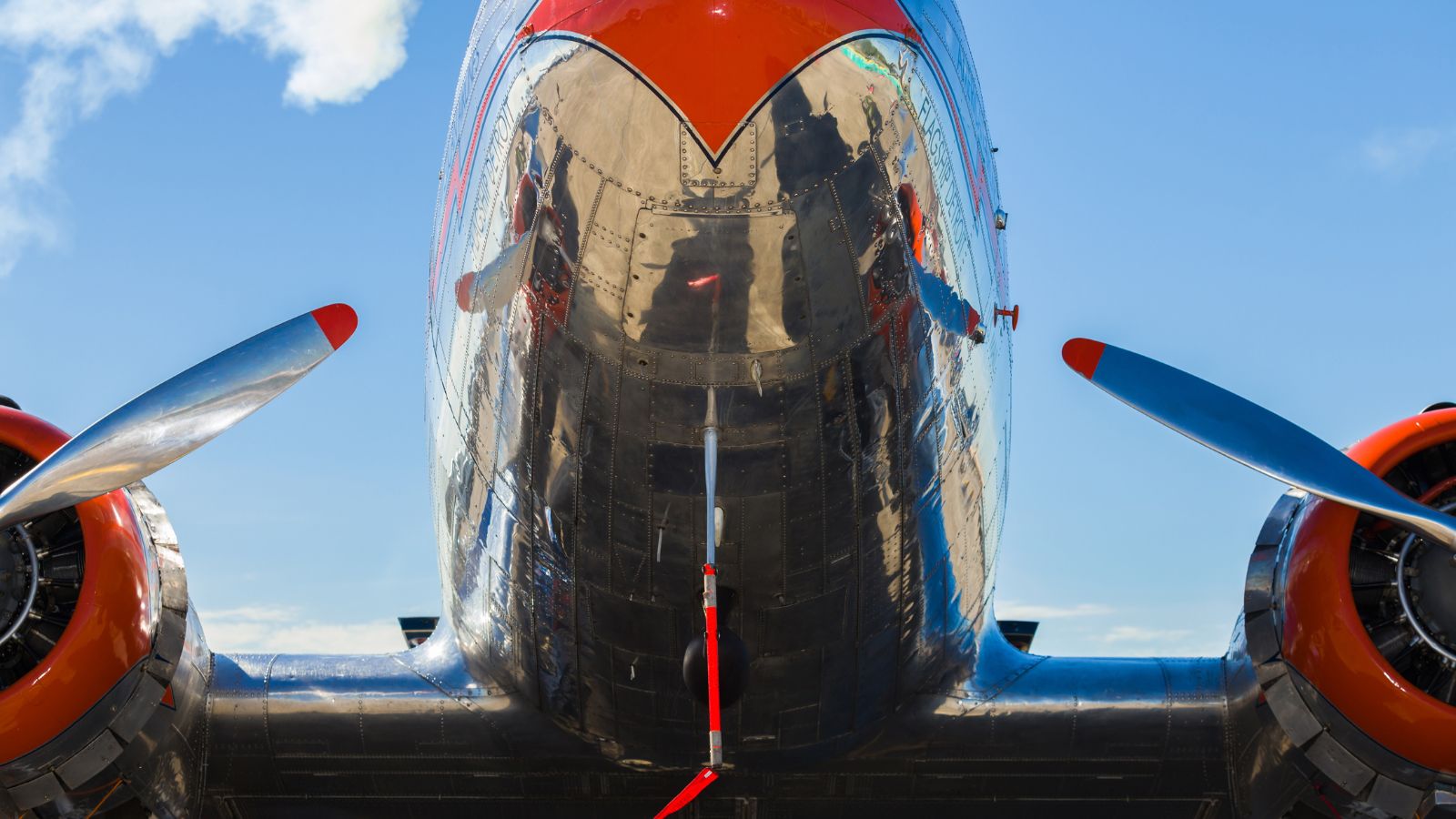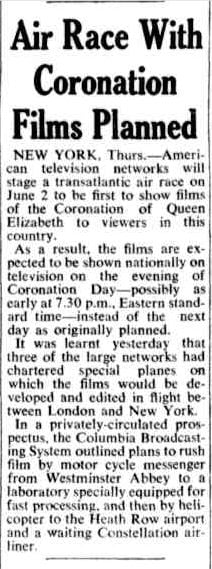The Coronation of Queen Elizabeth II in 1953 prompted a transatlantic airplane race between major US television networks, as they rushed to deliver the newsreels from the UK for broadcast across North America. Both CBS and NBC had promised to be the first, aiming to broadcast the evening of the Coronation instead of a day later as originally planned.
The potential benefits for their reputations and influence in the US, with the expanding television revolution, were great. CBS used a BOAC Stratocruiser, then the largest airplane used to fly across the Atlantic, while NBC opted for a Pan Am DC-6 charter. Both used propellers, and both left London for Boston aiming to arrive in time for the late evening news. At that time a flight from London to Boston took approximately 10 hours. The aircraft flew to Boston instead of New York because it was closer and they could land an hour sooner.
At the time, television was really taking off and the coronation had been widely seen as a trigger for an increase in TV sales as families anticipated gathering together to watch the event live from their living rooms. Since then, the world of TV has been transformed; multiple channels, on-demand viewing, available on phones, computers, and tablets and streamed almost anywhere.
Like the world of TV, aviation has also transformed since the last coronation. The 88-seat DC-6 has been replaced by 200+ seat 787 Dreamliners. A once 10-hour flight to Boston from Heathrow now takes between 7 hours 20 minutes and 7 hours 45 minutes, depending on the aircraft and airline, and upwards of an hour less in the other direction. A Pan Am ‘tourist’ class return fare back then between London and New York cost US$495, equivalent to almost US$6,000 today. Flying was still for the elite, whereas today it is for the masses. Heathrow Airport handled 1 million passengers in 1953, but last year it saw 62 million passengers pass through.
So, who won the race?
Neither CBS nor NBC. A third news network, ABC, had arranged to retransmit the broadcast by the Canadian Broadcasting Corporation (CBC). CBS had the advantage of ‘Operation Pony Express’ which saw film recordings flown by helicopter from the BBC headquarters at Alexandra Palace to London Airport at Heathrow, then on a jet-powered RAF Canberra to Canada, landing at Goose Bay in Labrador where the film canisters were transferred to a Royal Canadian Air Force CF-100 jet fighter to be flown on to Montreal. ABC was able to retransmit the CBC feed, getting on air some 90 minutes ahead of its rivals.
Back in 1953 aircraft were simply used to transport films to facilitate the broadcast of the coronation across the Atlantic but today it’s normal to have TV screens on the back of every airplane seat, and many airlines have wi-fi available.
It’s now possible to access news and messages in real-time from on-board. You can bet that there’ll be people watching the next coronation of a British monarch from the seat of an aircraft at 30,000 feet.
"Air Race With Coronation Films Planned" The West Australian (Perth, WA : 1879 - 1954) 9 January 1953







